Understanding Shoulder Pain Radiating
Down Arm to Fingers

I’ve been there... dealing with that annoying shoulder pain that runs down your arm and even into your fingers. It’s not just a little ache; it messes with your everyday life.
Whether it’s trying to work, enjoy hobbies, or just carry on with simple tasks, the pain can get in the way.
For me, figuring out what was causing it and how to manage it was a game-changer. Sometimes it’s bad posture or overuse, but other times it’s something more serious like a pinched nerve or a condition in the neck or shoulder.
Either way, getting to the root of the problem is key.
Importance of Addressing Radiating Shoulder Pain
Ignoring shoulder pain that travels to the fingers can lead to significant complications, impacting your quality of life.
Left untreated, it may progress to chronic pain, reduced mobility, and potentially permanent nerve damage.
Taking steps early on to address this pain can relieve discomfort, prevent long-term issues, and promote overall well-being.
Effective treatment restores the ability to comfortably engage in daily activities, pursue hobbies, and maintain a fulfilling, active lifestyle.
Consider my friend Jane, a passionate gardener, who experienced this pain a few years ago. At first, she brushed it off as a minor annoyance.
However, the pain quickly escalated, making her favorite gardening tasks, like pruning roses and planting bulbs, incredibly painful.
Seeking medical help opened her eyes to the seriousness of her condition. Through treatment and some lifestyle adjustments, Jane regained control and returned to her garden, a reminder of how addressing shoulder and arm pain early can help us get back to what we love.

What Causes Shoulder Pain Radiating Down the Arm?
This pain typically results from nerve compression or irritation, often arising from issues in the cervical spine or shoulder blade area. Common causes include:
- Nerve Compression:
Pinched or compressed nerves in the neck or shoulder, often due to herniated discs, bone spurs, or spinal stenosis. - Injuries:
Trauma to the shoulder or neck from sports or accidents can damage nerves and cause radiating pain. - Repetitive Strain:
Repeated motions like typing or lifting can lead to overuse injuries affecting the nerves. - Thoracic Outlet Syndrome:
Compression of nerves or blood vessels between the collarbone and first rib causes pain and numbness that may extend down the arm.
Key Symptoms to Watch For
- Pain: Sharp, burning, or aching sensations beginning in the shoulder and radiating down to the fingers.
- Tingling or Numbness: Pins and needles or loss of sensation in the arm and fingers.
- Weakness: Difficulty gripping or a sense of weakness in the arm.
- Limited Mobility: Restricted shoulder or arm movement without pain.
Why Early Attention to Pain Matters
Addressing radiating shoulder pain early is essential to avoid chronic issues. Untreated, it can lead to complications such as lasting pain, nerve damage, and limited mobility.
Primary Causes of Shoulder Pain Radiating to Fingers
- Cervical Radiculopathy: Nerve compression in the neck from herniated discs, bone spurs, or spinal changes that radiate down the arm.
- Rotator Cuff Injuries: Damage to muscles and tendons around the shoulder joint, common in athletes and individuals who frequently use overhead movements.
- Thoracic Outlet Syndrome: Compression of nerves or blood vessels near the collarbone, causing pain and numbness radiating down the arm.
- Other Causes: Conditions such as bursitis, tendinitis, or arthritis in the shoulder may also lead to pain that extends down the arm.
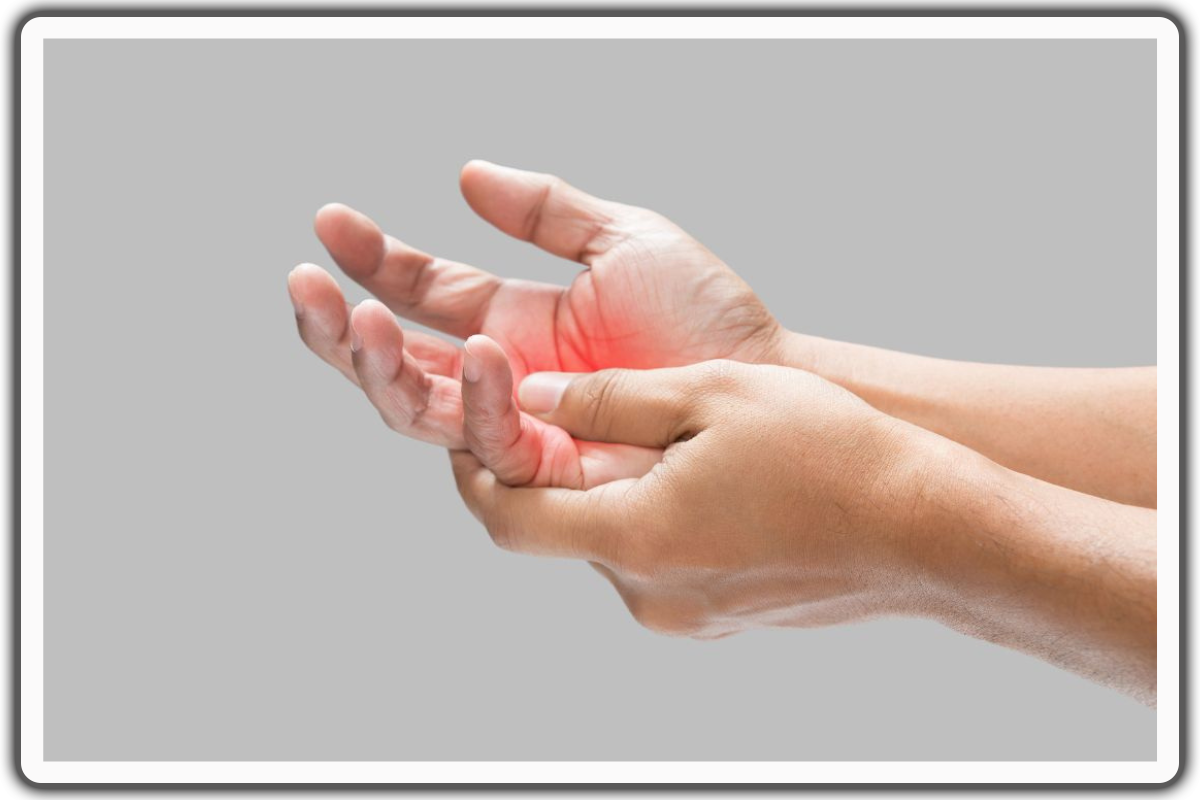
Effective Treatment Approaches
- Medical Treatments:
Anti-inflammatory drugs, muscle relaxants, and pain relievers may be prescribed. Physical therapy is often recommended to strengthen muscles and improve flexibility. - Home Remedies:
Applying ice or heat to the area can relieve pain and reduce inflammation. Resting the shoulder and avoiding aggravating activities is also important. - Exercises and Stretches:
Gentle stretching and strengthening exercises, like neck stretches, shoulder rolls, and arm circles, can relieve pain and improve mobility.
When to Seek Medical Attention
If you’re experiencing shoulder or arm pain, it’s crucial to know when to seek medical help. Here are some signs that indicate it’s time to consult a healthcare professional:
- Sudden or Severe Pain: Intense pain in the shoulder or arm that comes on suddenly should not be ignored.
- Numbness or Tingling: Persistent numbness or tingling sensations in the arm or hand can indicate nerve issues that need medical evaluation.
- Weakness or Paralysis: If you experience weakness or an inability to move the arm or hand, seek immediate medical attention.
- Difficulty Moving the Arm or Shoulder: Limited range of motion or stiffness that doesn’t improve with rest may require professional assessment.
- Swelling or Redness: Visible inflammation in the shoulder or arm, especially if accompanied by pain, should be checked by a doctor.
- Fever or Chills: These symptoms, along with shoulder or arm pain, could indicate an infection or other serious condition.
- Recent Trauma or Injury: Any recent injury to the shoulder or arm, such as a fall or accident, warrants a medical evaluation to rule out fractures or other damage.
Additionally, if you’re experiencing persistent or recurring shoulder or upper arm back pain, it’s essential to seek medical attention to rule out any underlying conditions that may be causing the pain. A healthcare professional can provide a proper diagnosis and treatment plan to help alleviate the pain and prevent further complications.
By recognizing these signs and seeking timely medical help, you can address shoulder and arm pain effectively and prevent it from impacting your quality of life.
These exercises focus on improving mobility, reducing tension, and strengthening muscles around the shoulder, neck, and upper back. Remember to perform each exercise slowly and stop if you feel any sharp pain.
1. Neck Stretches
Begin in an upright standing position with your feet hip-width apart, maintaining good alignment with your head, shoulder, hips, and legs. Place your hands at your side. Engage your core and slowly tilt your head to one side, bringing your ear towards your shoulder. Hold the position for several deep belly breaths, in through your nose and out through your mouth. Relax and repeat the movement on the opposite side.
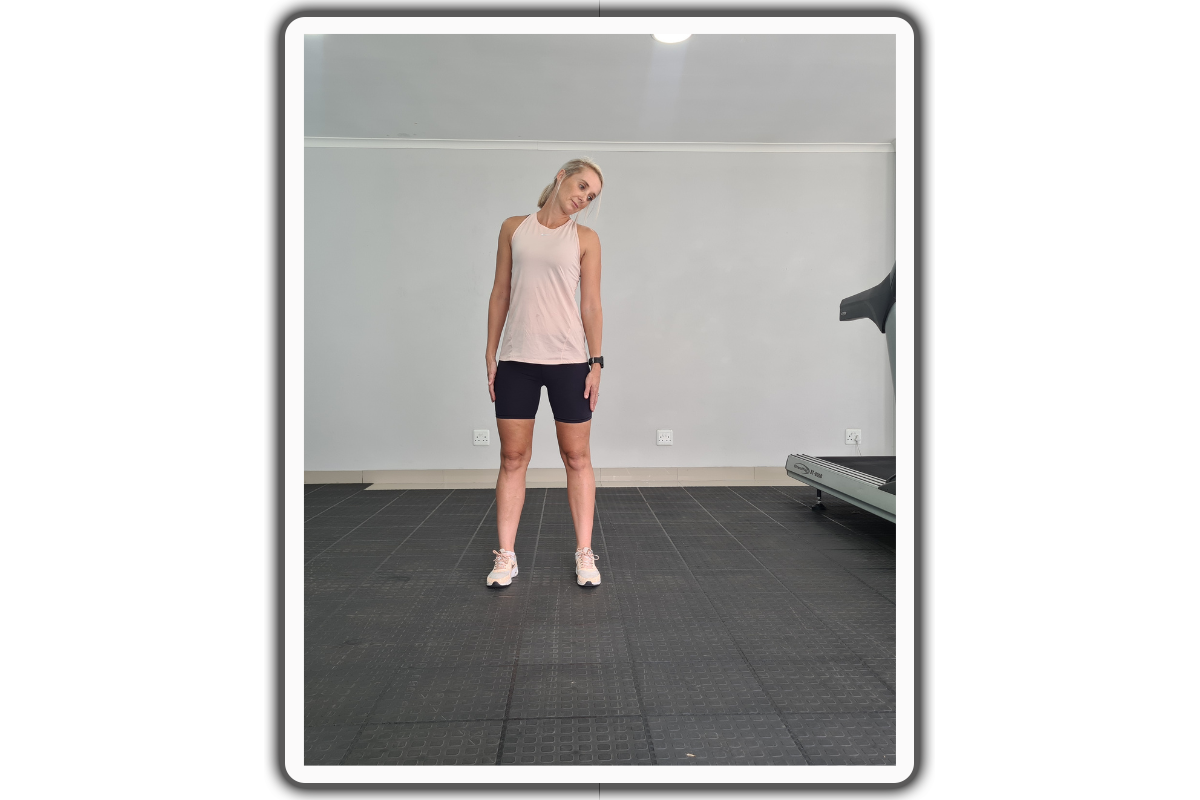
Benefits: Stretches and relieves tension in the neck muscles, which can help reduce nerve compression that may cause radiating pain.
2. Chin Tucks
Begin in an upright standing position with your feet hip-width apart and back against the wall, maintaining good alignment with your head, shoulders, hips, and legs. Engage your core. Place one hand on your chin and gently tuck your chin down as if you’re creating a “double chin” while keeping your gaze forward. Hold the position for 5 seconds, then relax and repeat the movement with 10 repetitions.
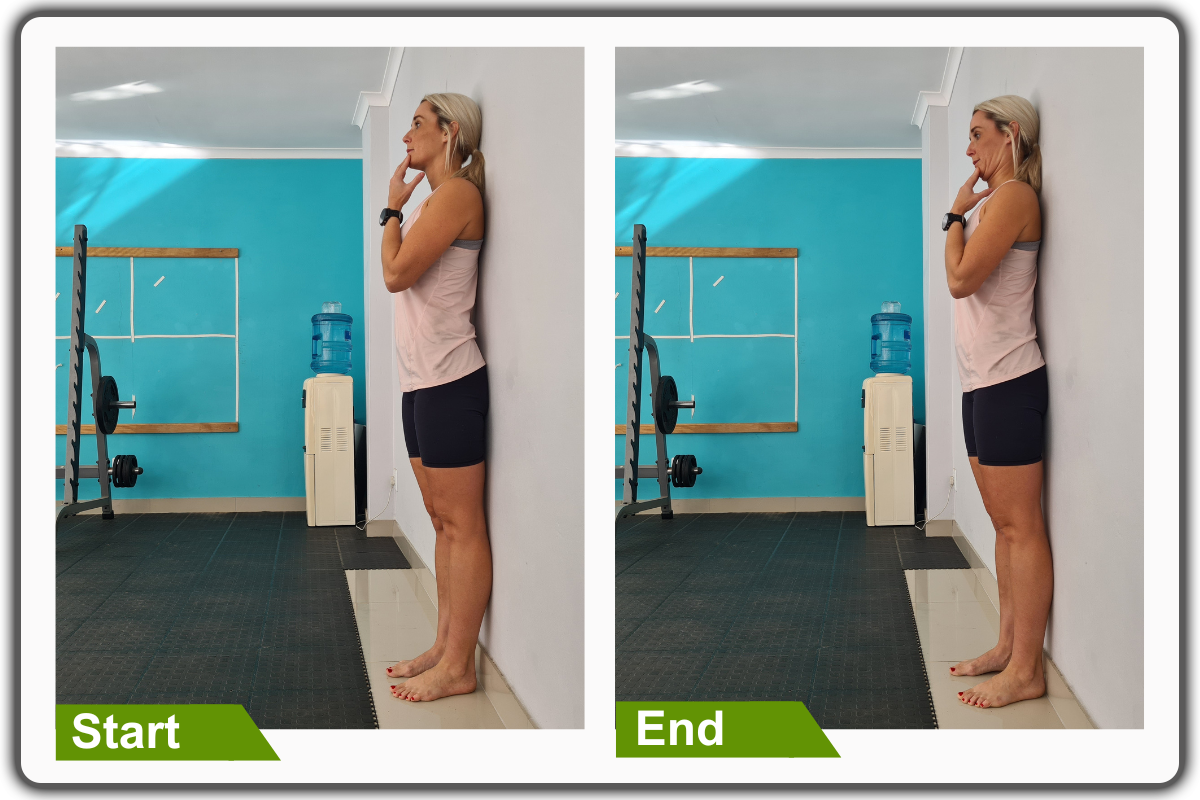
Benefits: Strengthens neck muscles and helps correct forward head posture, reducing strain on the cervical spine and shoulder area.
3. Shoulder Rolls
Begin in an upright standing position with your feet hip-width apart, maintaining good alignment with your head, shoulders, hips, and legs. Place your hands on your side. Engage your core. Shift your shoulders upward, then roll them back until you feel resistance in your shoulder blades. Relax and repeat the movement in the opposite direction. Complete 10 repetitions.
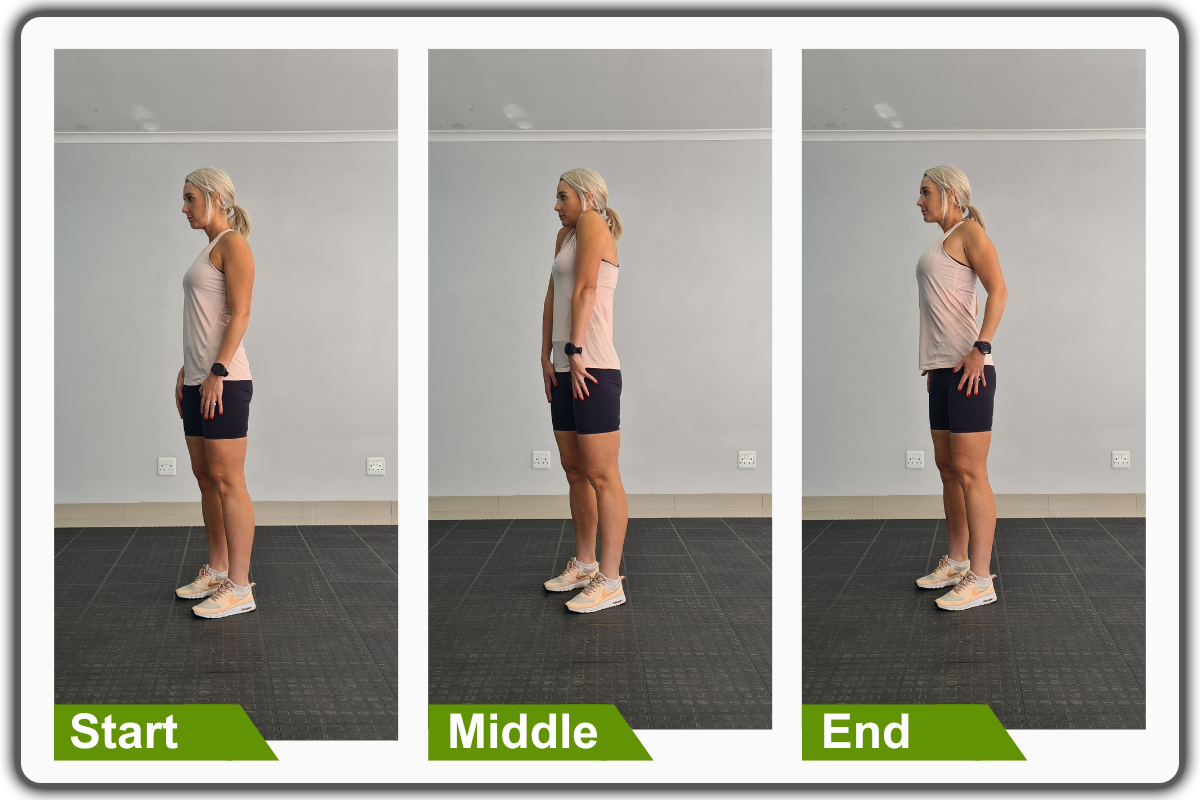
Benefits: Loosens shoulder muscles and improves blood flow, which can help alleviate pain and tension.
4. Doorway Chest Stretch
Begin in an upright standing position on a doorway with your feet close together, maintaining good alignment with your head, shoulders, hips, and legs. Bent your arms at a 90-degree angle and your forearm resting against the doorframe. Engage your core and slowly move your chest forward to stretch the chest and shoulder gently, squeezing the shoulder blades together. Hold the position for 15- 30 seconds. Relax and repeat the movement.
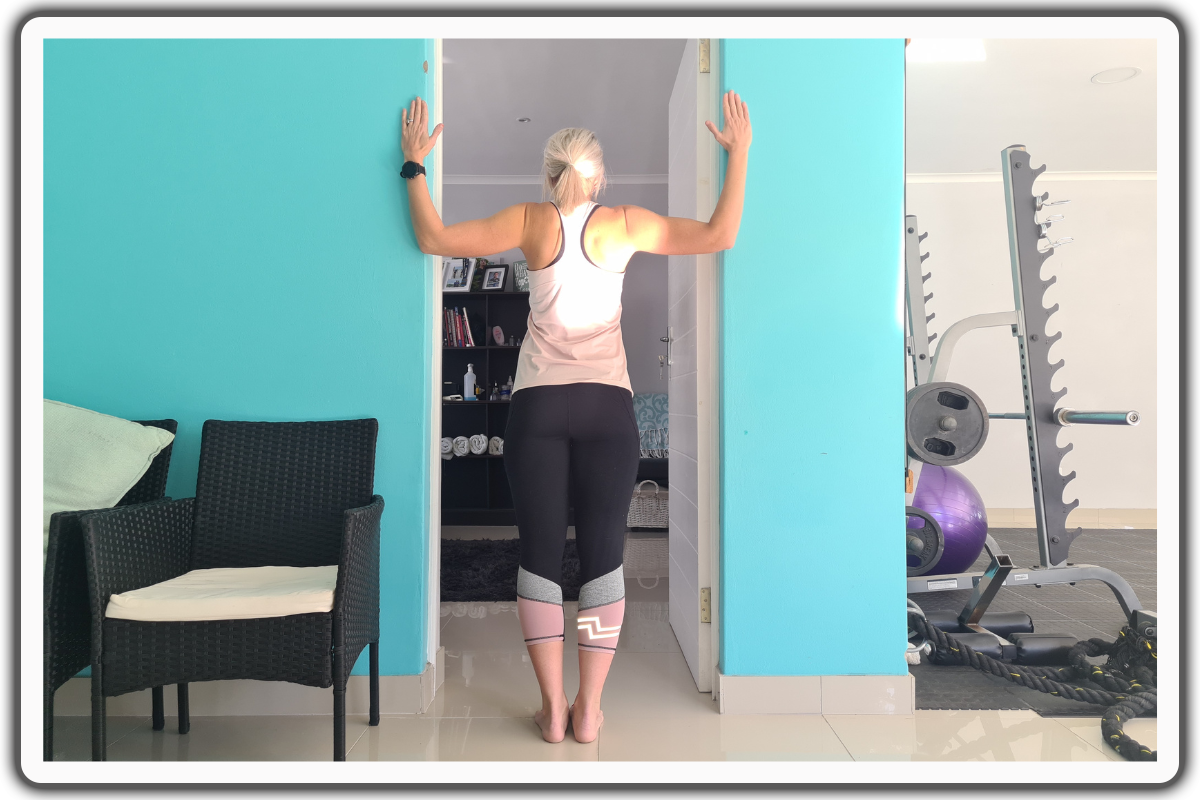
Benefits: Opens up the chest and shoulders, reducing tightness that can lead to pain radiating down the arm.
5. Pendulum Swing
Begin in an upright standing position in front of a chair with your feet shoulder-width apart, maintaining good alignment with your head, shoulders, hips, and legs. Hinge through your hips to move your upper body forward as you place one hand at the back of the chair while the opposite arm hangs on the side. Engage your core and gently swing your arm back and forth or create small circles. After 10 repetitions, repeat the movement on the opposite arm.
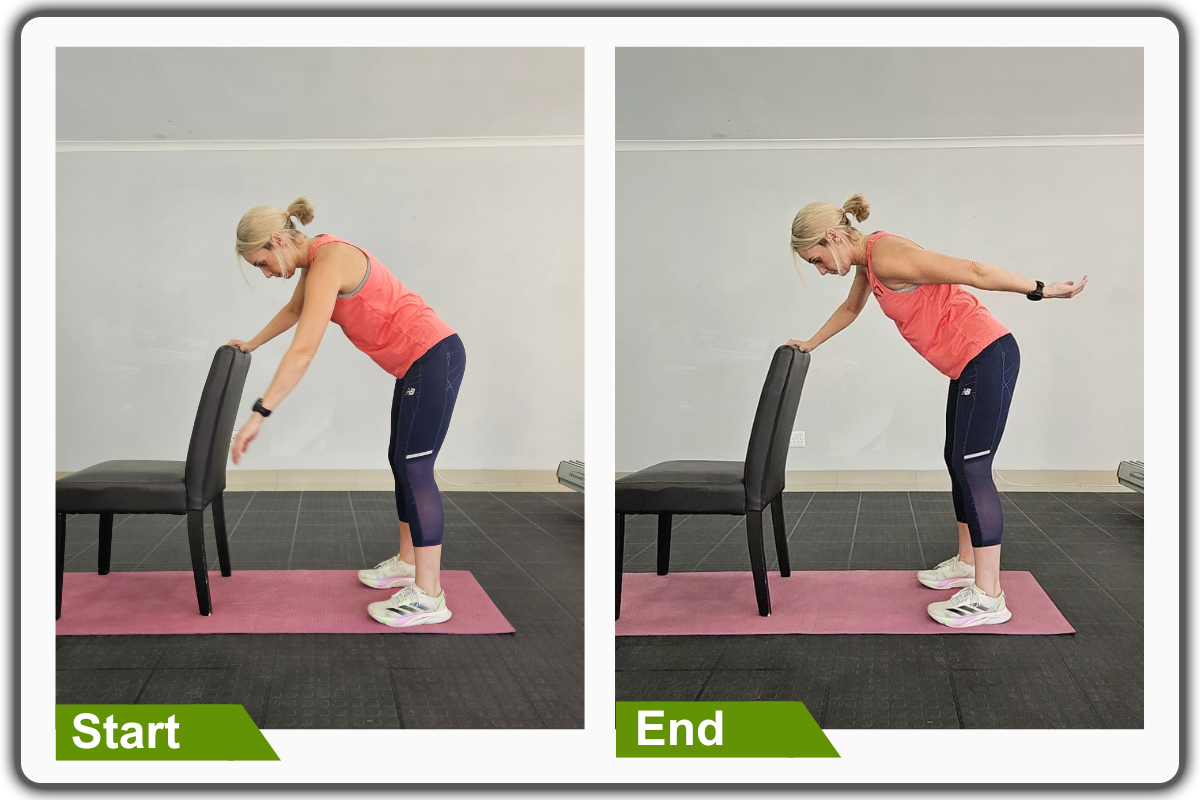
Benefits: Relieves shoulder tension and helps maintain shoulder joint mobility without putting pressure on the affected area.
These exercises, done regularly, can help ease shoulder pain and prevent it from radiating down the arm.
Preventing Shoulder Pain in the Future
- Lifestyle Changes and Preventive Measures: A healthy lifestyle with a balanced diet and regular exercise can help prevent shoulder pain. Avoid straining the shoulder and neck, and take frequent breaks if your activities involve repetitive motions.
- Ergonomic Tips for Work and Daily Activities: Set up your workspace to minimize strain on your shoulders and neck. Use a supportive chair, position your computer screen at eye level, and consider a headset if you’re frequently on the phone.
- Regular Exercise and Stretching: Incorporating exercises that strengthen shoulder and neck muscles into your routine can help prevent pain. Stretching exercises, like shoulder rolls, neck stretches, and arm circles, improve flexibility and reduce injury risk.
Dr. Edward Laskowski is a physical medicine and rehabilitation specialist at the Mayo Clinic, with a focus on sports medicine. He is a highly regarded expert in the field of exercise science and injury prevention. Dr. Laskowski often discusses the benefits of regular exercise and stretching for maintaining mobility, reducing the risk of injuries, and improving quality of life.
Conclusion
Shoulder pain radiating down the arm to the fingers can result from conditions like cervical radiculopathy, rotator cuff injuries, or thoracic outlet syndrome. Early diagnosis and treatment are vital to both pain management avoid progression. Effective treatments include medication, physical therapy, home remedies, and specific exercises.
If you experience shoulder pain extending down your upper arm bone sometimes, don’t ignore it. Seek medical advice and consider preventive measures in your daily routine.
Have you ever dealt with radiating shoulder pain? Feel free to share your experiences and tips below. If you have questions, I’m here to help!
FAQs
Q- Why does my shoulder pain go down my arm to my hand?
A: Can shoulder pain go down to your hand? It is common for shoulder pain to radiate across the body, especially along the hand. Damage or strain to various shoulder muscles, including the latissimus dorsi, the serratus anterior, the rotator cuff muscles, and the pectoral muscles, can lead to hand pain.
Q- How do you treat shoulder pain that radiates down your arm?
A: Gently hold an ice pack (or bag of frozen peas) wrapped in a towel on your shoulder for 15 to 20 minutes a few times a day. Take painkillers – anti-inflammatory painkillers (such as ibuprofen) or paracetamol may help. A GP can prescribe stronger painkillers if needed.
Q- How do I know if my shoulder pain is heart-related?
A: The main difference is how pain radiates. For men: Pain will spread to the left shoulder, down the left arm or up to the chin. For women: Pain can be much more subtle. It may travel to the left or right arm, up to the chin, shoulder blades, and upper back — or to the abdomen (as nausea and/or indigestion and anxiety).
Q- Should you massage a pinched nerve in the shoulder?
A: Massage therapy may help relieve the pain associated with a pinched nerve, but it will not cure the underlying condition. If you do decide to try massage therapy, be sure to see a qualified therapist who has experience treating people with pinched nerves.
Q- How long will a pinched nerve in the shoulder last?
A: It is difficult to say precisely how long a pinched nerve in the shoulder will last. For some people, a pinched nerve will resolve itself quickly – in days or weeks. For others, it may last longer.
References
1- Thoracic Outlet Syndrome
Kuhn, John E. MD; Lebus, George F. V MD; Bible, Jesse E. MDAuthor Information
Journal of the American Academy of Orthopaedic Surgeons 23(4):p 222-232, April 2015. | DOI: 10.5435/JAAOS-D-13-00215
https://journals.lww.com/jaaos/fulltext/2015/04000/Thoracic_Outlet_Syndrome.4.aspx
2- Rotator Cuff Injuries
Management of Rotator Cuff Injuries
Weber, Stephen MD; Chahal, Jaskarndip MD, MSc, MBAAuthor Information
Journal of the American Academy of Orthopaedic Surgeons 28(5):p e193-e201, March 1, 2020. | DOI: 10.5435/JAAOS-D-19-00463
https://journals.lww.com/jaaos/fulltext/2020/03010/management_of_rotator_cuff_injuries.4.aspx
3- Shoulder pain: diagnosis and management in primary care
BMJ 2005; 331 doi: https://doi.org/10.1136/bmj.331.7525.1124 (Published 10 November 2005)
Cite this as: BMJ 2005;331:1124
https://www.bmj.com/content/331/7525/1124.short
4- Cervical Radiculopathy
Cervical radiculopathy, Cervical Injuries and Treatment (HJ Kim, Section Editor) Published: 01 June 2016 Volume 9, pages 272–280, (2016) https://link.springer.com/article/10.1007/s12178-016-9349-4
5- Laskowski, E. R. "Stretching: Focus on Flexibility." Mayo Clinic, 6 May 2023,
https://www.mayoclinic.org/healthy-lifestyle/fitness/in-depth/stretching/art-20047931
